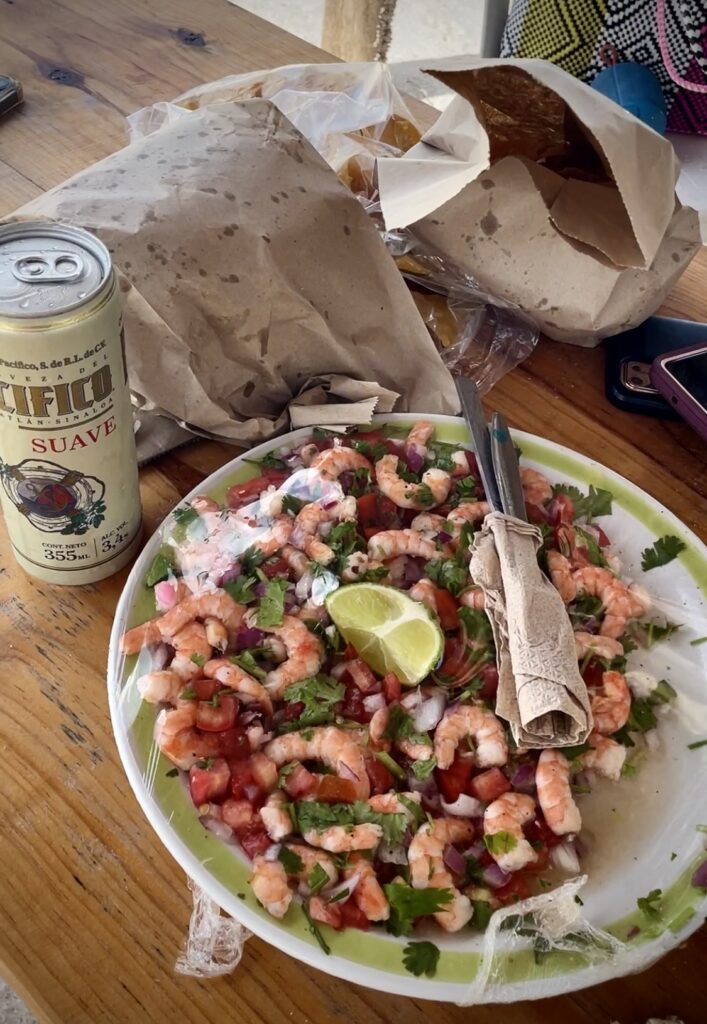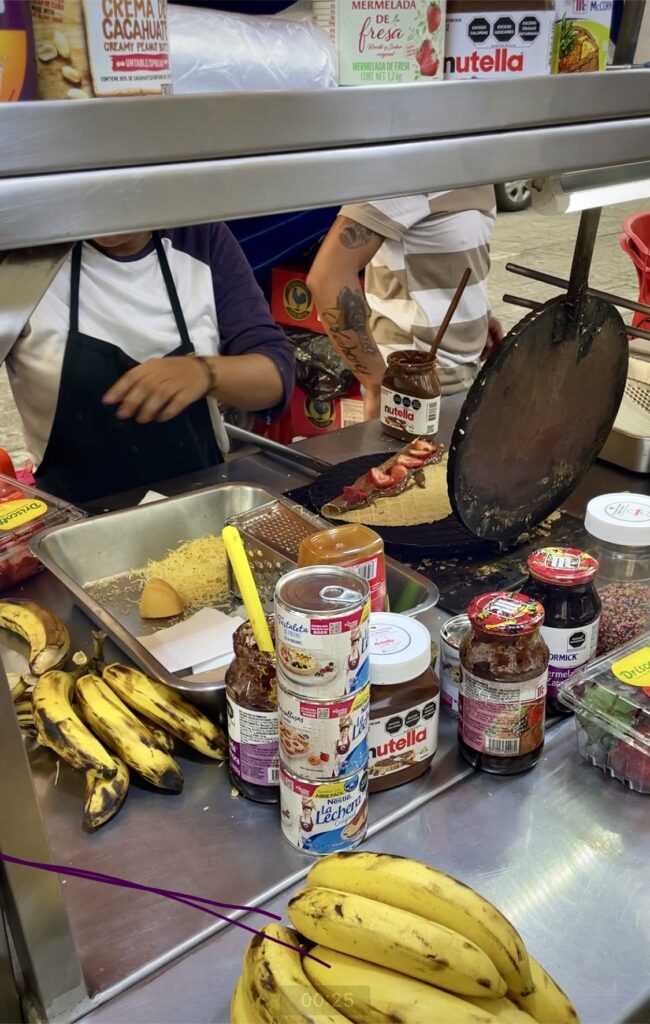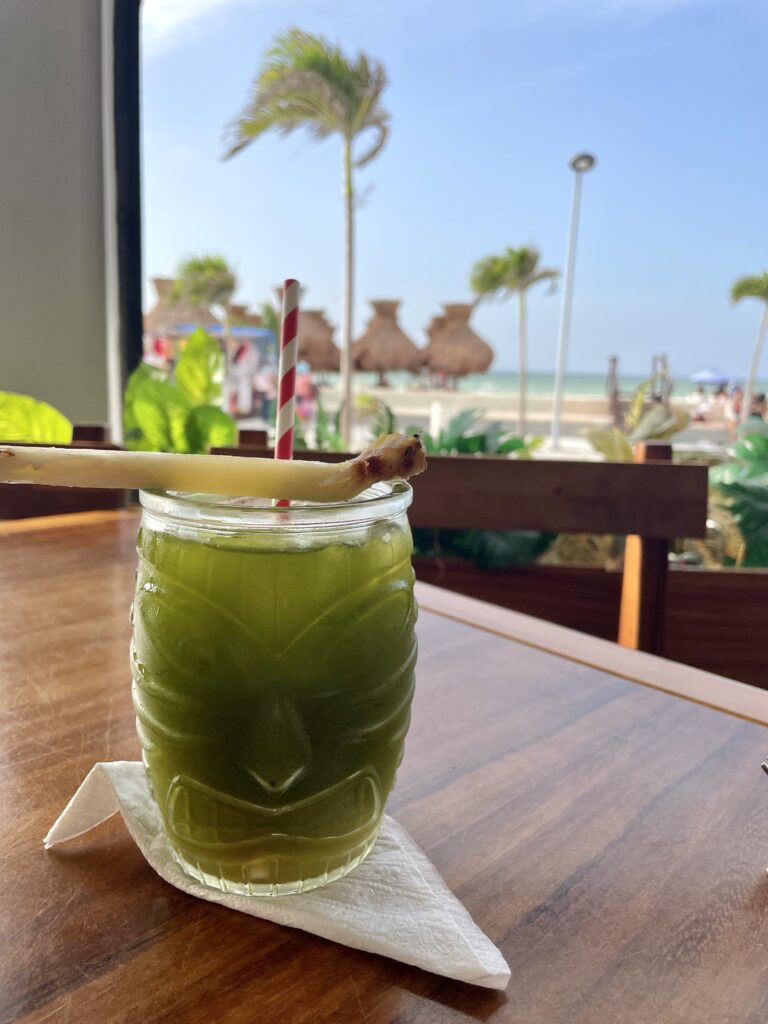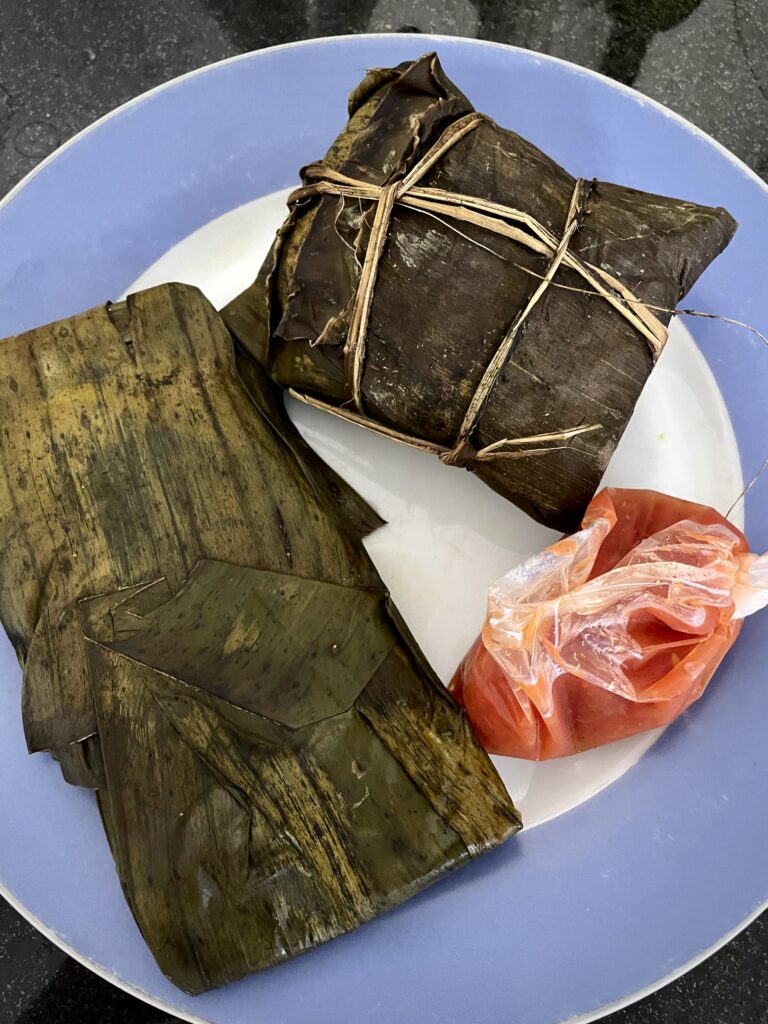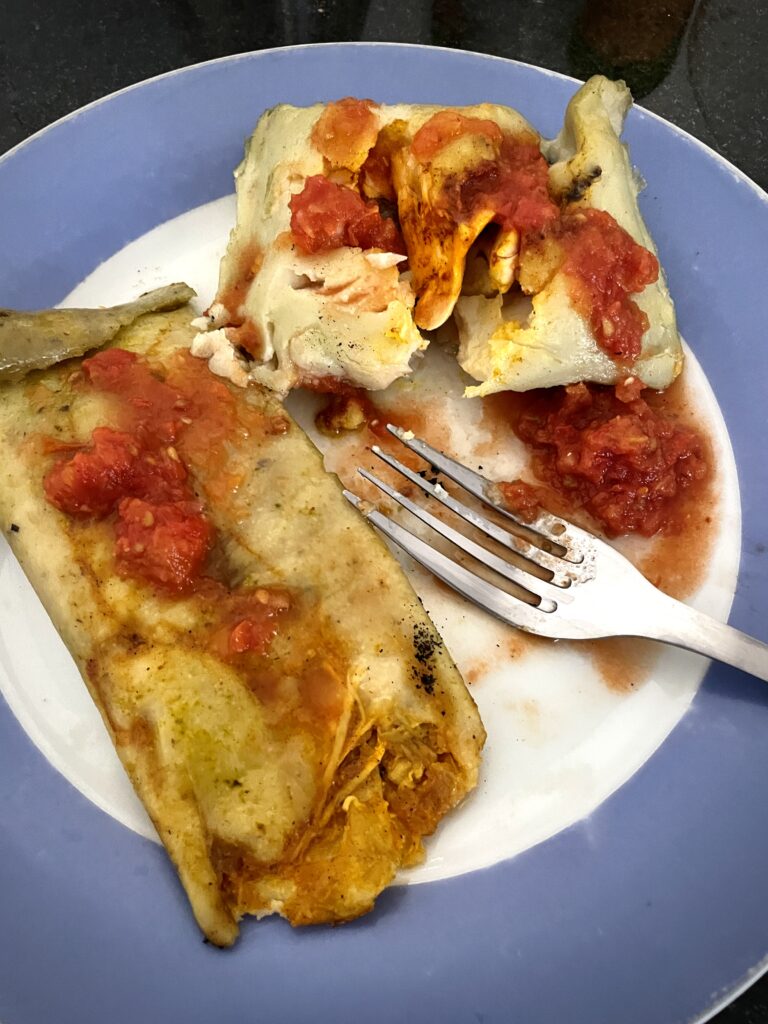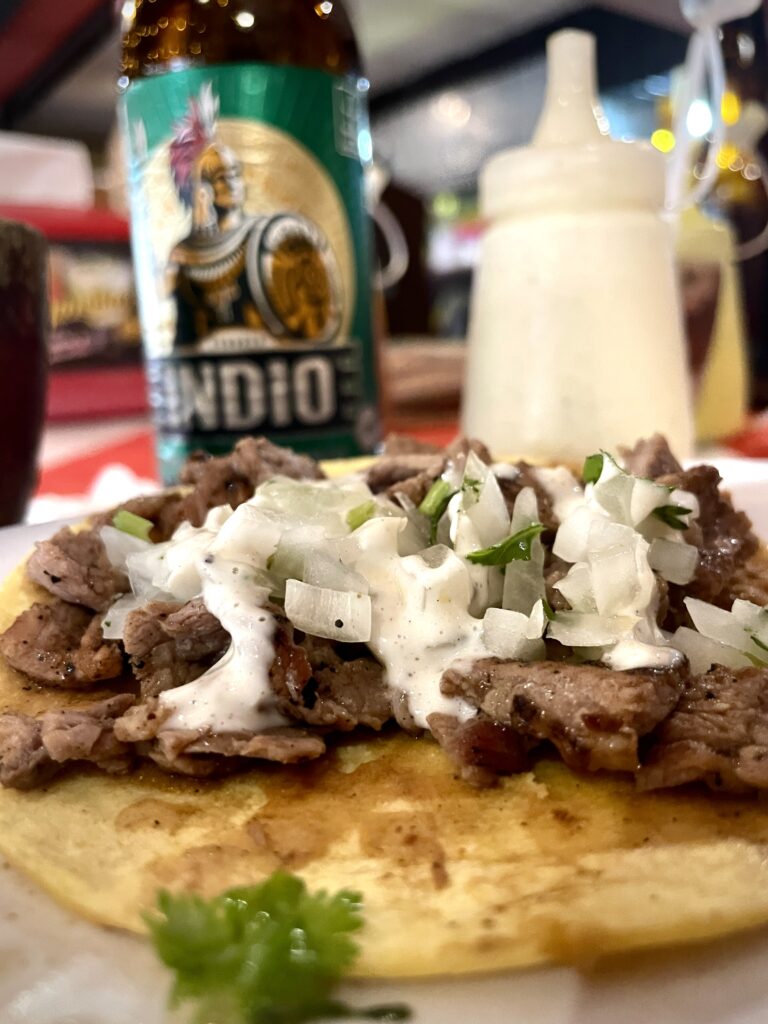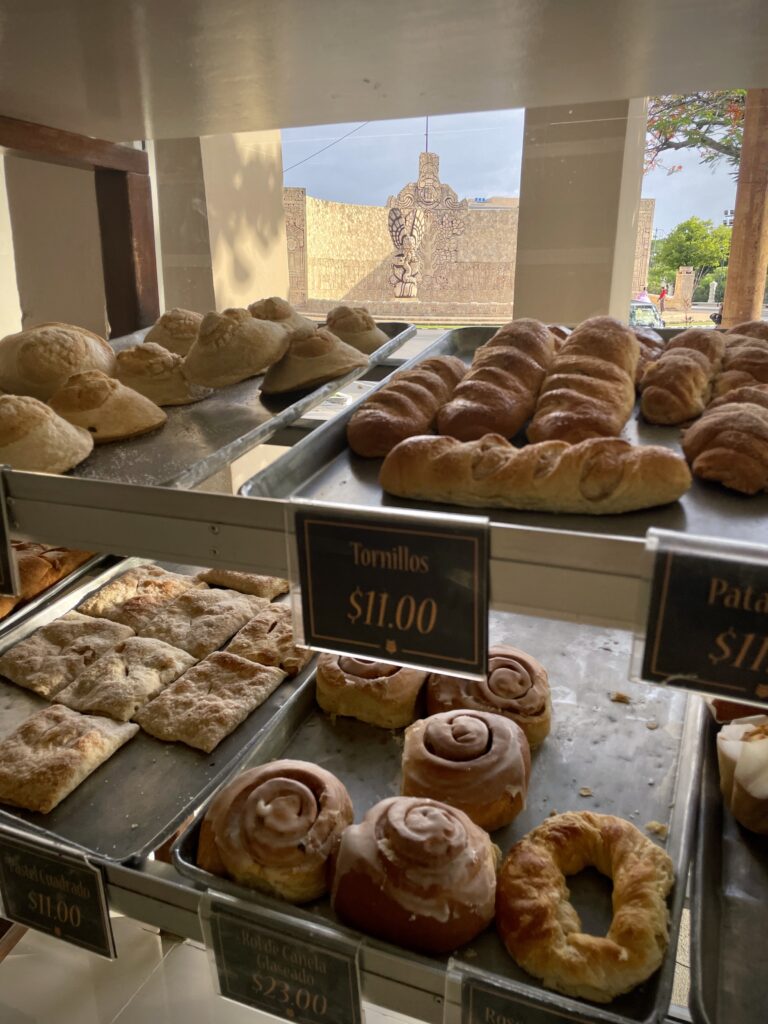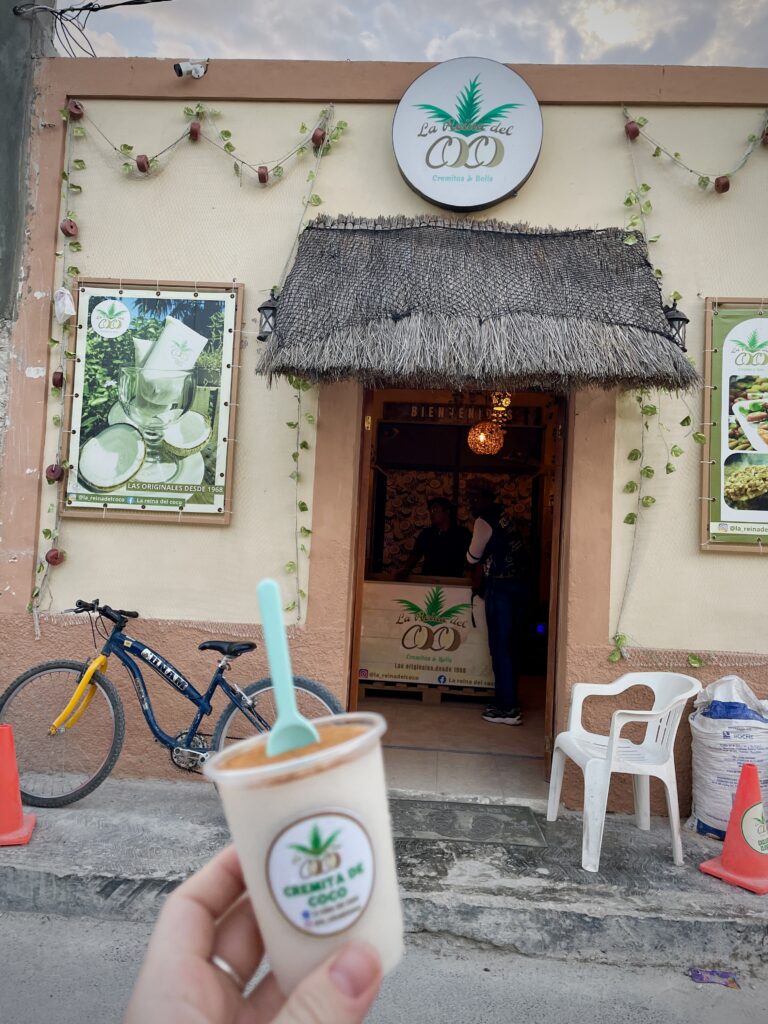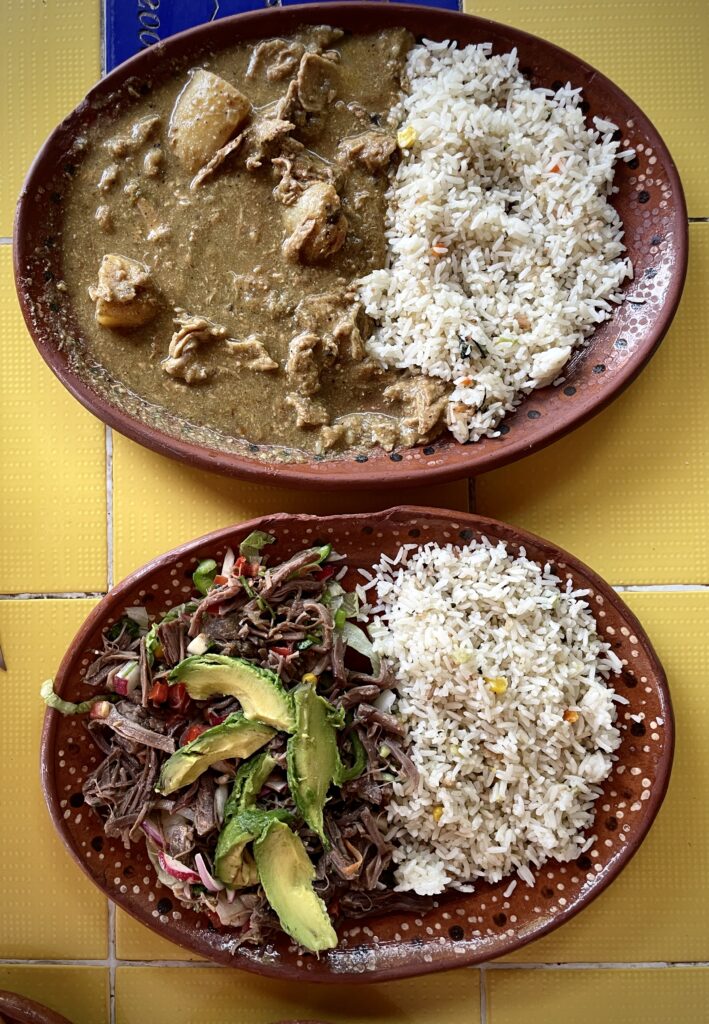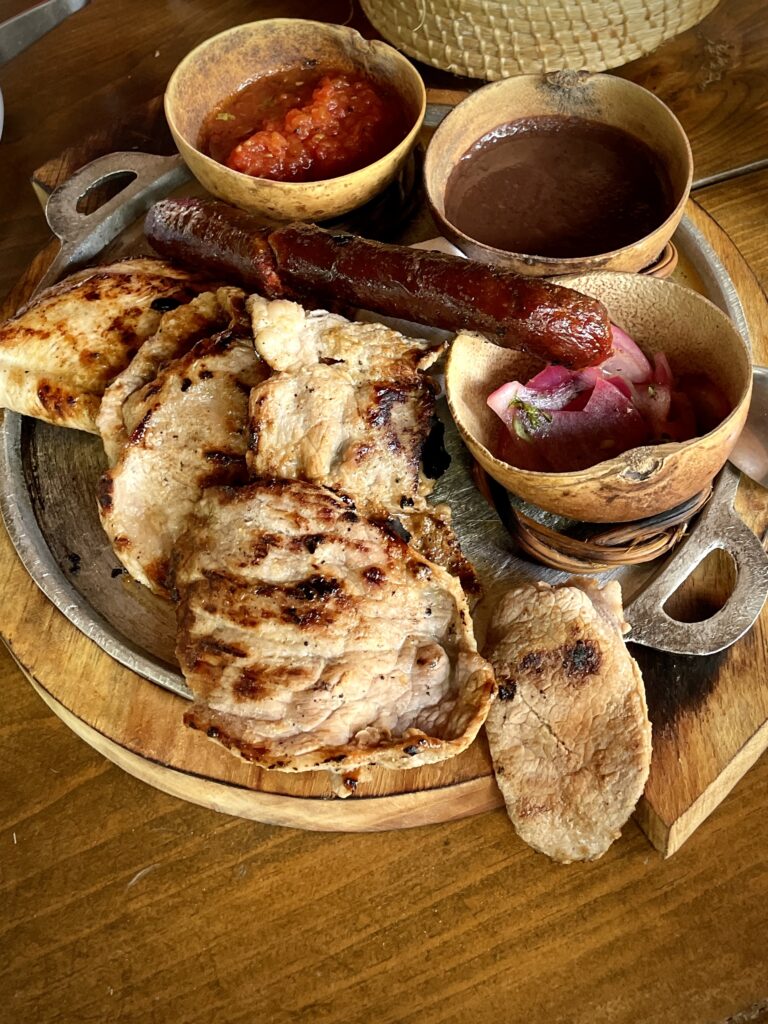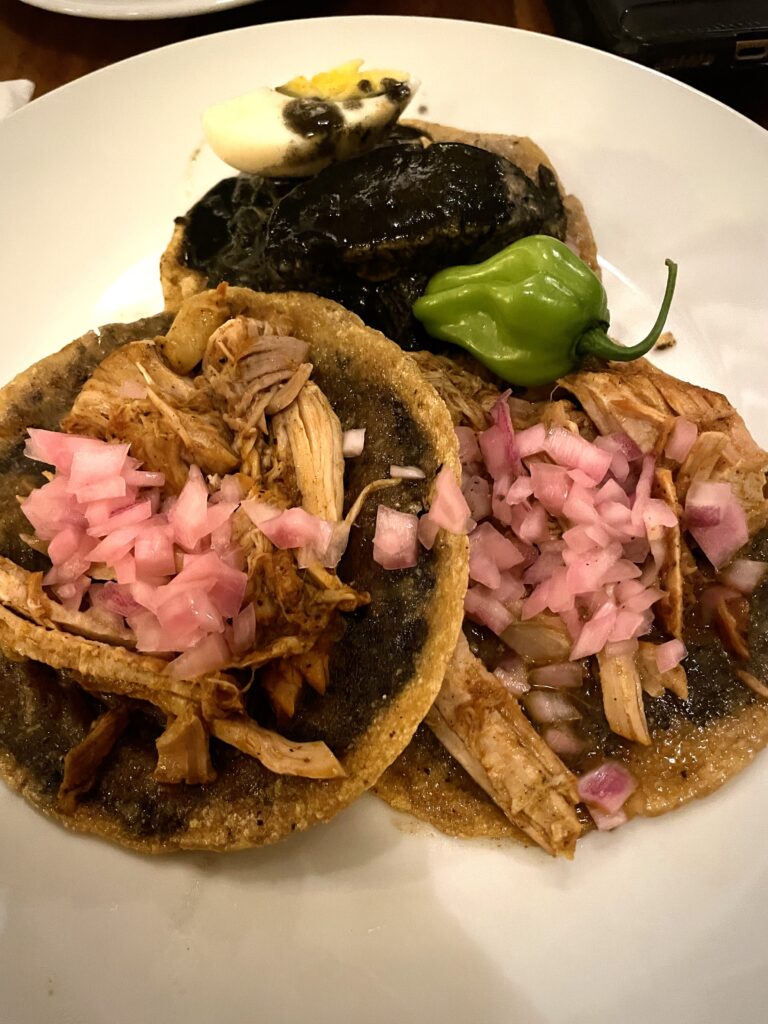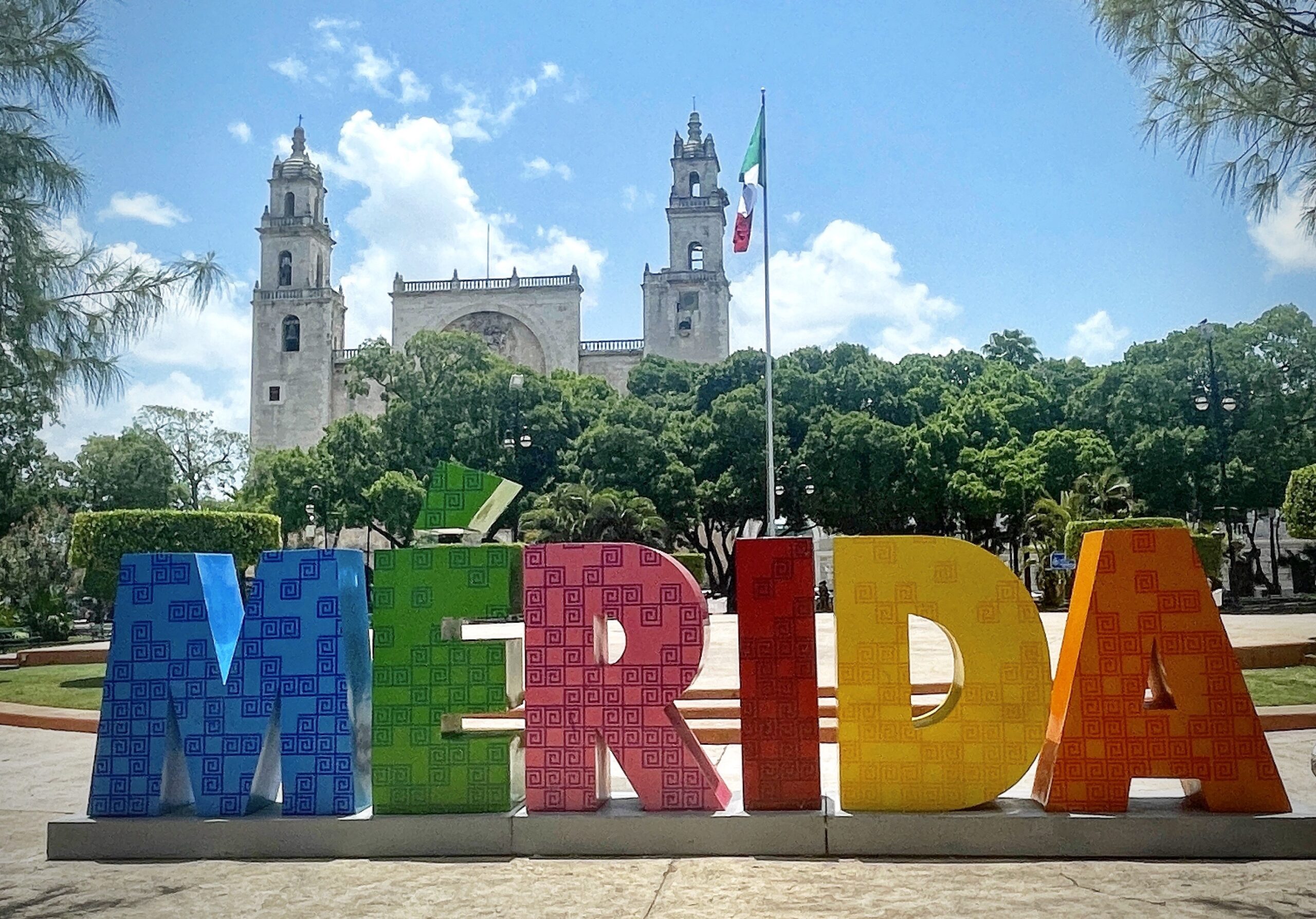- Day 1: Welcome to Mérida!
- Plaza Grande
- Merida Cathedral
- Museo Casa Montejo
- Museo de la Gastonomía Yucateca
- Yerba Santa Mérida
- Day 2: Cenotes & Pyramids
- Cenote Yaal-Utzil
- Hacienda Mucuyché
- Mayapán
- Plaza Grande
- Day 3: Beach Day
- Sisal
- Palapas la Bendición de Dios
- La Reina del Coco
- Day 4: Museums, Museums, Museums
- Museo Fernando García Ponce (MACAY)
- Museo de Arte Popular
- Los Platos Rotos
- Casa Museo Montes Molina
- Monumento a La Patria
- Day 5: More of Mérida, and Some Pyramids, Too!
- Walking Tour
- Palacio de Gobierno
- Uxmal
- Pan de Montejo
- Las Jirafas
- Day 6: The Grand Finale
- El Museo del Mundo Maya
- Progreso
- Quick Tips
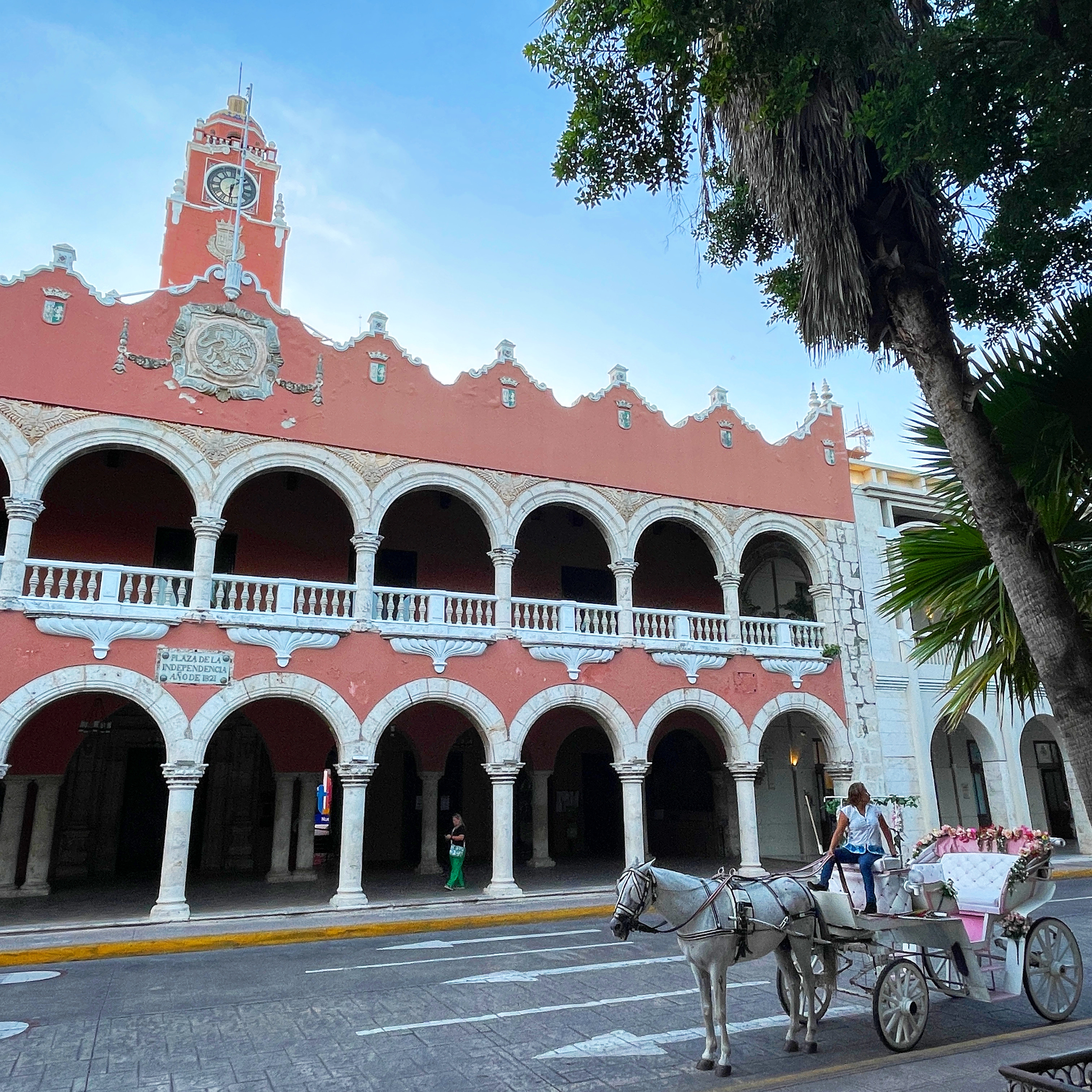
A friend from college wished me a happy birthday and then not so casually added, “Also, I’m probably moving to Germany, so you should come visit me in Mérida before I leave!” Done, and done. You don’t have to ask me twice!
Erika grew up in Mexico, but she and I met in a painting and 2D design class my freshman year of college at Indiana University of Pennsylvania. She stayed in the U.S. after we graduated and got her Master’s degree in English, before moving to Mexico City. I visited her for Day of the Dead in 2018, and was thrilled to spend a week adventuring around her new home during July!
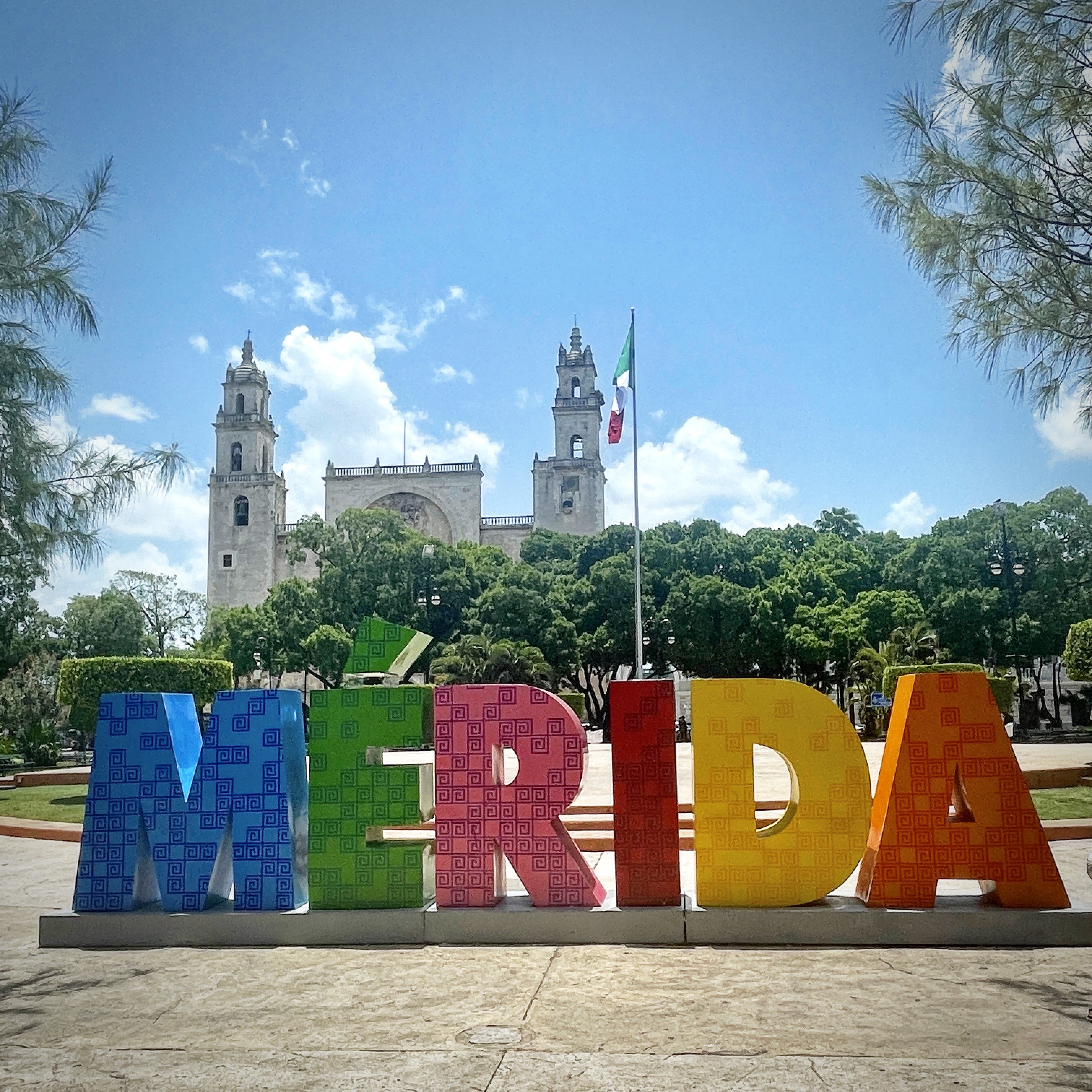
DAY 1: Welcome to Mérida!
Plaza Grande, Mérida Cathedral, Museo Casa Montejo, Museo de la Gastronomía Yucateca, Yerba Santa Mérida
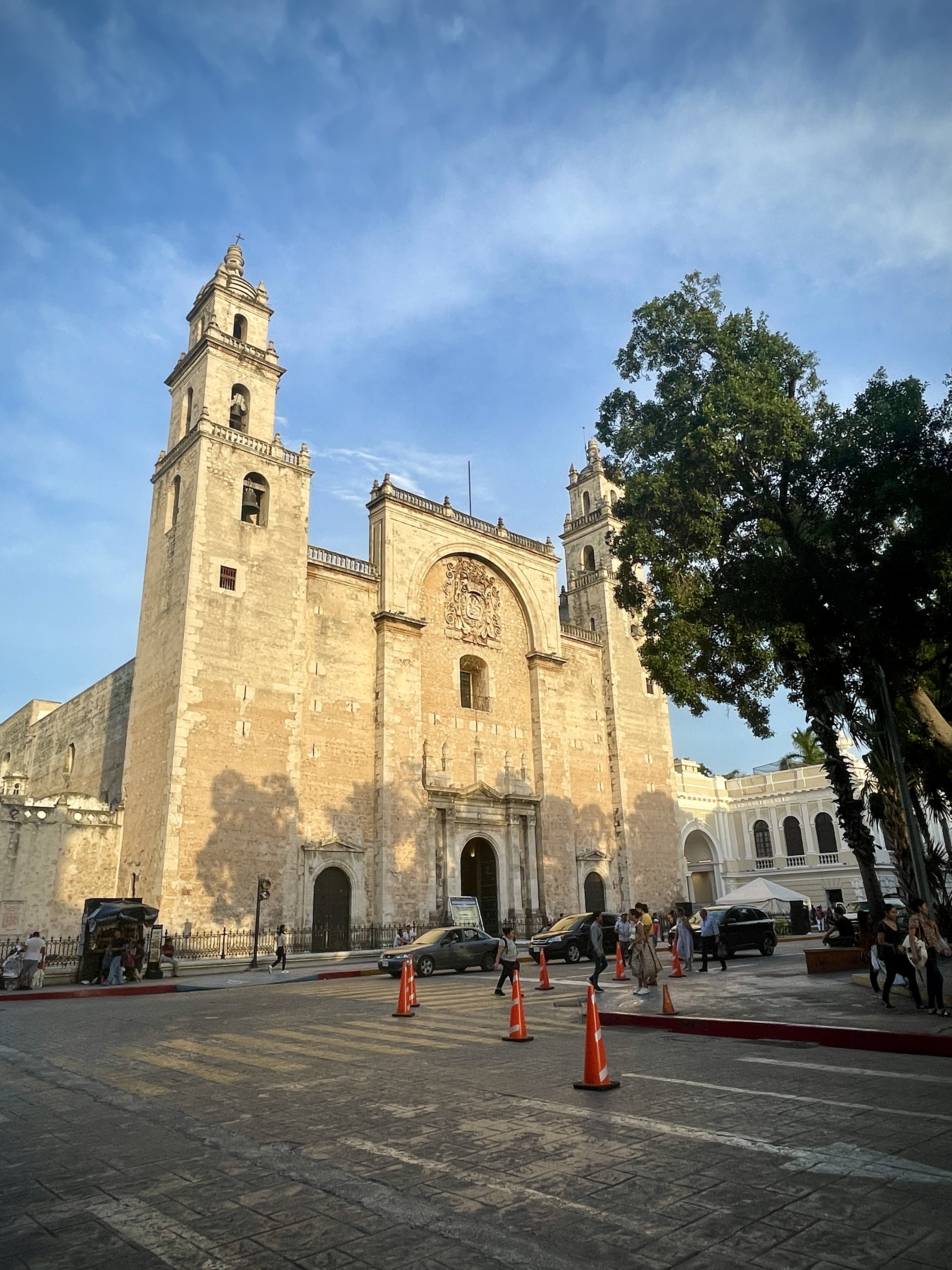
After making my way from Anchorage to Dallas it was a quick two and a half hour flight to Mérida. Erika picked me up from the airport, and we spent the rest of the afternoon exploring the city’s historic downtown.
We started at Plaza Grande, the heart of Mérida. Plazas are the hispanic and latino version of a town square, and are usually a gathering place where community events are held. They are typically surrounded by important buildings, and Mérida’s Plaza Grande is no exception. During my first afternoon we did a quick walk-through of the Mérida Cathedral before visiting the Museo Casa Montejo. Built during the 16th century by Don Francisco de Montejo, the building housed the Montejo family for centuries before being converted into a museum. It is free to visit, with a few historically maintained rooms and art exhibits throughout, along with a gift shop and garden. Casa Montejo also houses a bank, and there are ATMs just inside the entrance if you are in need of cash.
After our visit to Plaza Grande, we made our way to Erika’s house and freshened up for dinner. We met two of her friends at the Museum of Yucatecan Gastronomy, which was amazing! If you’re unfamiliar with the food of the Yucatan Peninsula, the restaurant and adjoining museum areas offer a wonderful introduction. Erika recommended cochinita pibil y relleno negro for my dinner as a good example of traditional Yucatan cuisine. There was live music while we ate, and it looked like one of the staff was giving a group a tour through the indoor part of the museum. My favorite part, however, was the outdoor area of the museum. Three women demonstrated traditional methods for making food, while the pibil cooked away in an underground oven. So cool!
Our final stop of the day was Yerba Santa Mérida. Erika’s friend Rodrigo had made reservations, and we met up with a fairly large group for drinks. It was a very popular spot, and absolutely beautiful! Before it was a restaurant, Yerba Santa Mérida was one of the large, French-style mansion homes found along Mérida’s main street, Paseo Montejo.
DAY 2: Cenotes & Pyramids
Cenote Yaal-Utzil, Hacienda Mucuyché, Mayapán, Plaza Grande
Day two took us on a road-trip to Cenota Yaal-Utzil. Cenotes are large sink holes filled with water. Formed when limestone bedrock collapses, some cenotes are open, while others are more cave-like. The one at Yaal-Utzil was open, with a clear view of the sky above and trees lining the perimeter. Once we arrived, we paid for our entrance and grabbed life jackets before making our way down the stairs, jumping into the water from a wooden platform and enjoying a few hours of floating. A few people jumped all the way from the top of the cenote (crazy!) and others had brough snorkel gear to explore underwater.
Once we were adequately pruney, we followed up our cenote soak with a visit to Hacienda Mucuyché. While there are also cenotes at Hacienda Mucuyché, we headed straight to their restaurant for lunch. We ordered empanadas and loganiza sausage and poc chuc to share, and once we were finished walked through the exterior spaces of the hacienda. Haciendas are large country estates or plantations, and Hacienda Mucyche used to belong to the Peon family, who raised livestock and henequen. Henequen is where the majority of Mérida and the Yucatan’s wealth came from. It is a type of agave and inside its green, spiky leaves is a fiber that was historically made into rope. At one point the rope industry was so crucial to the economy that henequen actually earned the nickname “green gold.”
Our last stop before returning home was the nearby city site of Mayapán. Mayapán was the political and cultural capital of the Maya in the Yucatán Peninsula during the Late Post-Classic period from the 1220s until the 1440s. Most of the buildings are still standing today, and you can also see examples of frescoes at the site. While some historical locales are more closed off than others, Mayapán is completely open, and you climb up the pyramids for a bird’s eye view of the city and surrounding area.
We ended our second day with another visit to Plaza Grande. We had seen people setting up tents on Saturday night, and they told us there would be a market the next day. We enjoyed live music and walked around the vendors’ tents while munching on esquites and marquesitas from one of the local food vendors. Esquites are cupse of corn filled with toppings like mayonnaise and cheese, while marquesitas are a crepe-like wafer that is rolled up around fillings of your choice. I ordered mine with strawberries and Nutella, but the traditional style is filled with chocolate hazelnut spread and queso bola (Edam cheese).
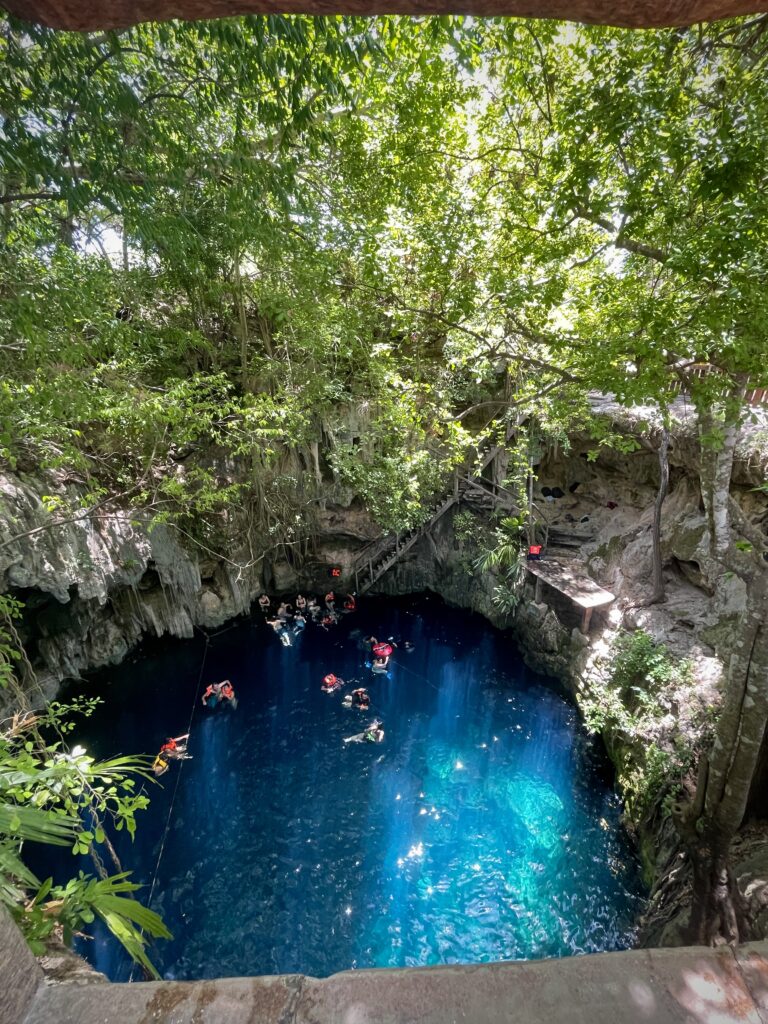

DAY 3: Beach Day
Sisal, Palapas la Bendición de Dios, La Reina del Coco
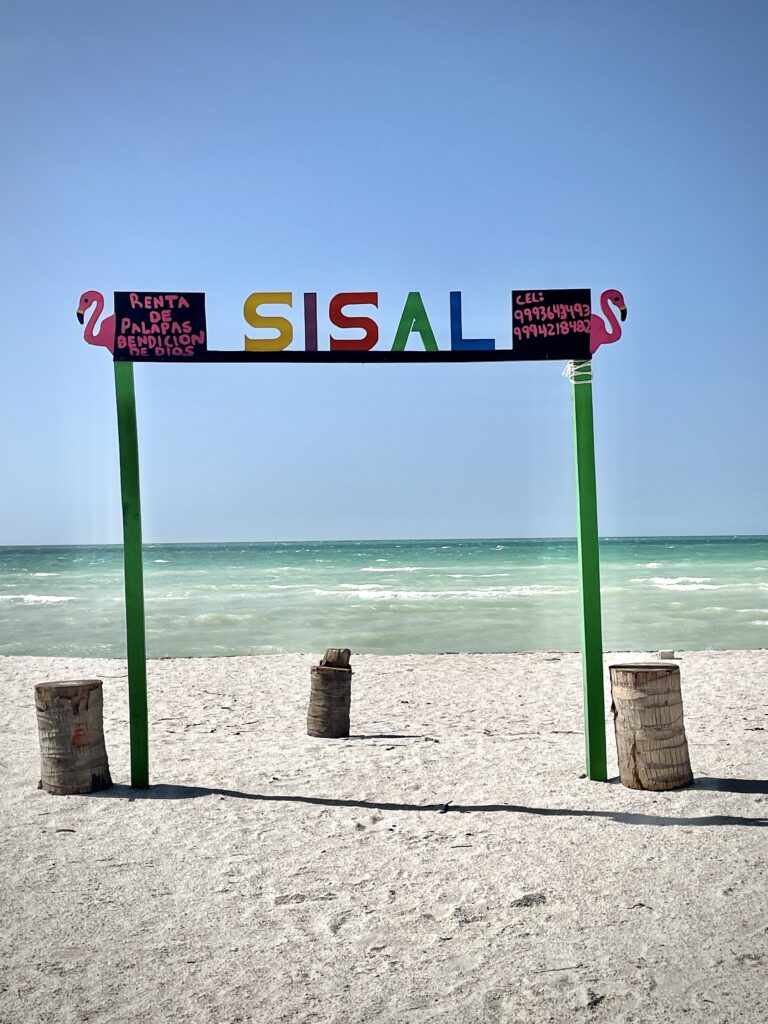
On day three we headed to the beach! Sisal is just over an hour northwest of Mérida, and home to flamingoes, amazing ceviche, and La Reina del Coco. We parked at Restaurante Los Pinos and then walked a short path to the beach. Palapas la Bendicion de Dios rent out their spaces on the beach, along with hammocks and lounge chairs. There is a number you can call to rent out your space, and someone will come set you up with whatever you request. In addition to renting the space, we also ordered cervezas and ceviche. The shrimp ceviche was amazing. Everything was really fresh and the person who took care of our needs while we were there was very friendly.
All in all, Sisal was a beautiful way to spend the day. The water was very warm for swimming, there were lots of cute signs and swings along the beach for photo ops, and we even saw a few big flocks of flamingos flying along the coast!
Once we had our fill of the beach, we made one final stop at La Reina del Coco before heading home. This tiny little shop is exactly what the name implies: all things coconut! Erika said they usually have a larger selection than when we stopped by, but it was the end of the day and they had sold out of most things. I scooped up a little cremita de coco cup and it was the perfect pint sized treat for the ride back to Mérida.
DAY 4: Museums, Museums, Museums
Museo Fernando García Ponce (MACAY), Museo de Arte Popular, Los Platos Rotos, Casa Museo Montes Molina, Monumento a La Patria
The next day was a busy one, with lots of museums and sights! While Erika was working in the morning, I took an uber downtown to the Museo Fernando García Ponce. Right off of Plaza Grande next to the cathedral, the museum is the only contemporary art museum on the Yucatan peninsula. Although a few of the sources I saw said that entry is free, this was not the case and there was an entry charge. I was directed upstairs, where I made my way through multiple rooms of work, some organized by theme and others dedicated to a single artist. There was also sculpture in the upstairs hall, and more sculptures in the main room downstairs.
My next stop was a few blocks away, and another museum. The Museo de Arte Popular is a great stop for anybody interested in the artistic traditions and culture of the Yucatan peninsula. Entry was free, and the museum’s various displays were organized by medium into six different rooms on the second floor.
Once Erika got home from work, we decided to head out in search of lunch. Our first stop was Mercado Lucas de Gálvarez. This massive market has a little bit of everything and was totally chaotic. While I usually love markets, this one felt super disorganized and Erika was not feeling it at all. She couldn’t believe it when I told her I’d read multiple blogs recommending a stop at this spot, so we headed to a restaurant she likes instead. Los Platos Rotos was wonderful! I’d highly recommend their salpicon de res and puntas en salsa verde, and the jugo del melón (cantaloupe juice) was to die for!
Finally fat and happy, we made our way to the nearby Casa Museo Montes Molina. Like Yerba Santa Mérida, Casa Museo is a historic home on Paseo Montejo, but instead of a restaurant this site operates as a museum. The home is two stories, with information in each room in both Spanish and English for visitors and a gift shop downstairs. There is also a large space behind the house for special events.
Our final stop of the day took us further down Paseo Montejo to the Monumento a La Patria. This large, circular monument is beautiful, and pays homage to the history of Mexico
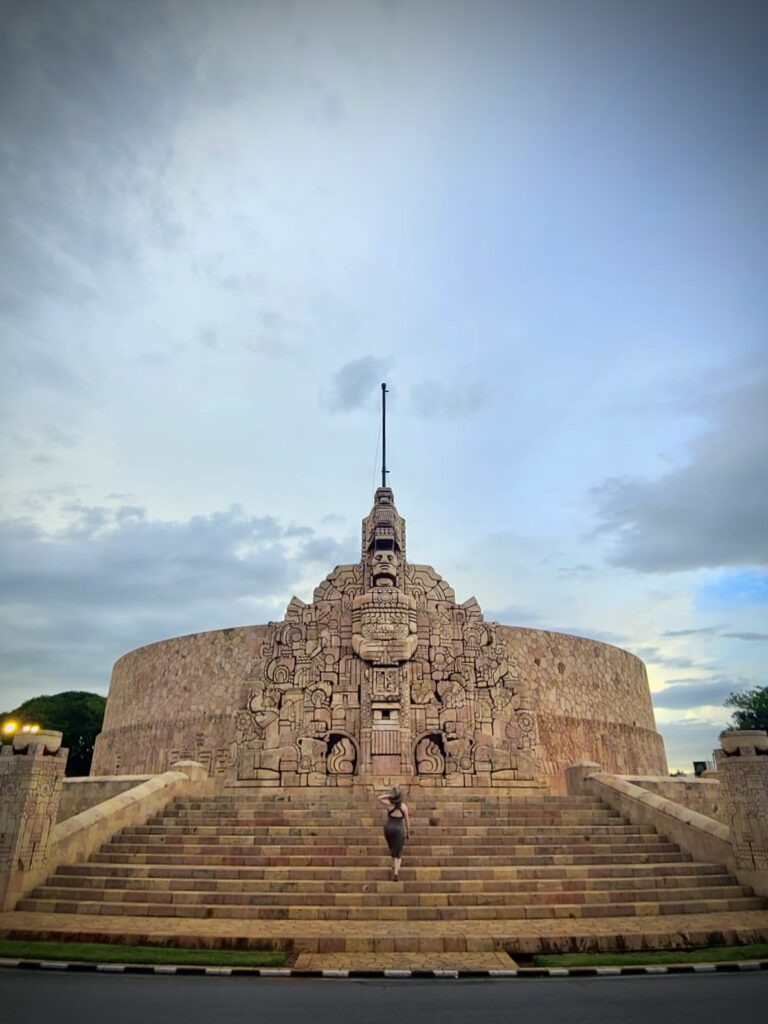
DAY 5: More of Mérida, and Some Pyramids, Too!
Walking Tour, Palacio de Gobierno, Uxmal, Pan de Montejo, Las Jirafas
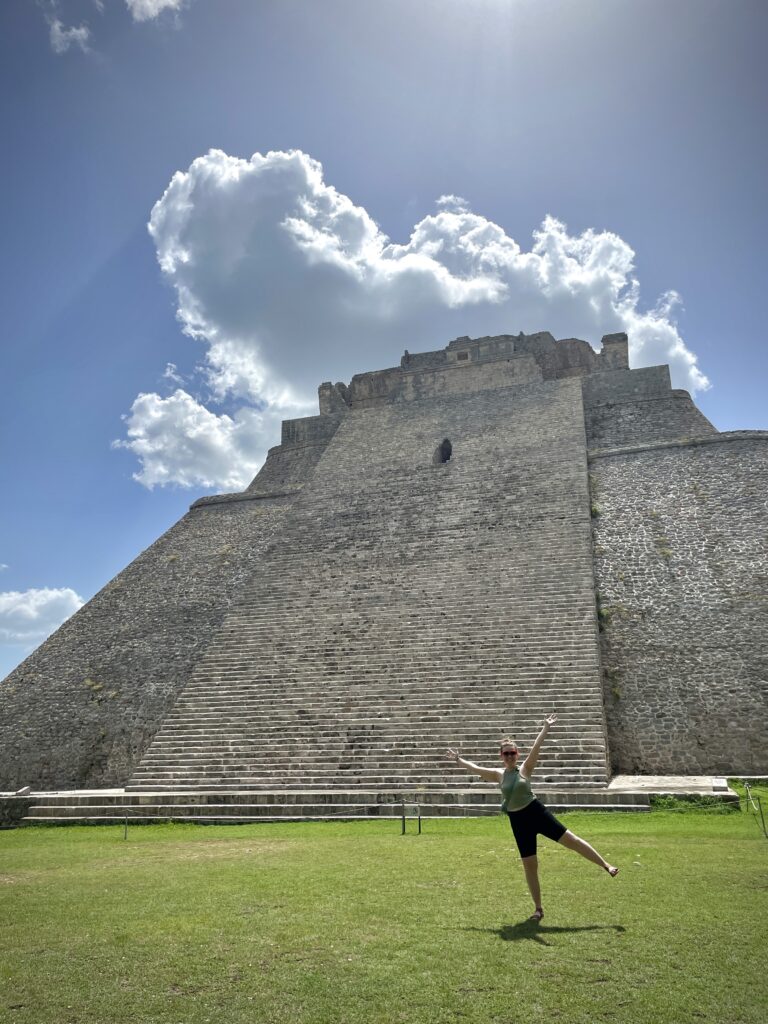
I started day five with my second uber trip downtown for a walking tour. Mérida has free walking tours every morning (except Sunday) at 9:30am. You first have to sign in at the tourism office, found at Plaza Grande’s Centro Cultural Olimpio. The tours are offered in both English and Spanish, although the guide spoke very, very quickly and so if one of those is not your native language you would probably have a hard time understanding him. The walking tour didn’t do much walking, mostly focusing on the buildings bordering the plaza and talking about the five pyramids that were once located there.
Because of the tour, I learned about an art exhibit at the Palacio de Gobierno, and so went to check it out once we were done. The building is full of massive paintings by Fernando Castro Pacheco. The collection depicts the history and culture of the area and each piece has a descriptions posted with it in Spanish, English, and Mayan. Entry is totally free, but there is a small desk inside where they will inquire about the size of your group of visitors.
I took an uber back to the house to meet Erika after she got done with work, and we headed to one of her favorite spots: Uxmal. Uxmal is a large Mayan city that is recognized as a Unesco Heritage Site. Unlike Mayapán, while you can walk through the area to see the various buildings you cannot climb the pyramids or enter them. Even without that access, the site is incredible and just walking through is an amazing experience.
After our visit, we made a quick stop at the nearby Choco-Story museum. Erika had visited previously and I’ve been to chocolate museums in the past, so opted to keep it a short trip. Their cafe had a very rich, but very cold chocolate drink that was super refreshing after a hot afternoon of walking through the pyramids!
On our way home we took a little detour through the town of Muna, and Erika quickly parked in front of the Mercado Municipal, grabbed her wallet, and hopped out of the car when she saw a woman selling vaporcitos, which are similar to tamales. She grabbed a little to-go baggie for us, then we made our way back to Mérida.
Once we were back in town, we decided we wanted tacos for dinner! Erika recommended Las Jirafas, which is near the Monumento a La Patria, so we headed that way. When we got there, we realized that they weren’t quite open yet (taquerias open late in the day and don’t close until after midnight, sometimes staying open until 3am!) and so made our way to Pan de Montejo for some appetizers! I ordered a panque pepita de calabaza (pumpkin seed muffin) and bolita de queso (cream cheese ball). Both were absolutely delicious, as were the tacos del pastor and bistec that we had at Las Jirafas!
DAY 6: The Grand Finale
El Museo del Mundo Maya, Progreso
My final full day in Mérida, we visited El Museo del Mundo Maya and the beach town of Progreso. The museum offered more of a look at the history, traditions, culture, and current state of the Mayan people of the Yucatan. There were many video stops to complement the displays, although they were only in Spanish. After making our way through the museum we paid a quick visit to the gift shop before hitting the road and making our way to Progreso.
Upon arrival in Progreso, we started with a little time at the beach. Like Sisal, Progreso was very, very windy. When Erika tried to lay down while I took a quick stroll down the beach, she got completely sandblasted. Unlike Sisal, the water where we were at the public beach was very shallow. It is because of that shallow water that Progreso is home to the longest pier in the world. We kept mostly to the left of the pier at first, and Erika said that the food trucks in the area where we were are popular at night. Unfortunately we arrived too early in the day to enjoy them.
Once I realized the water was too shallow to really do much swimming at the beach, we made our way past the pier, into town and had dinner at Mobula. The food was good, but my favorite part of the meal was the agua de chaya. Chaya is a plant unique to Yucatan, and I really enjoyed the bright green drink throughout my week. We followed up dinner with some gelato from Gelatopía, which was delicious but an absolute disaster once we left the air conditioned shop and walked outside into the crazy heat! Our night ended with a walk down Progreso’s boardwalk and back onto the beach.
The next morning of day seven was spent doing laundry (I was headed directly to Portland for another week-long trip), packing, and souvenir shopping, before saying our goodbyes. Erika is always such a wonderful host, and Mérida is a city I hope to visit again in the future!
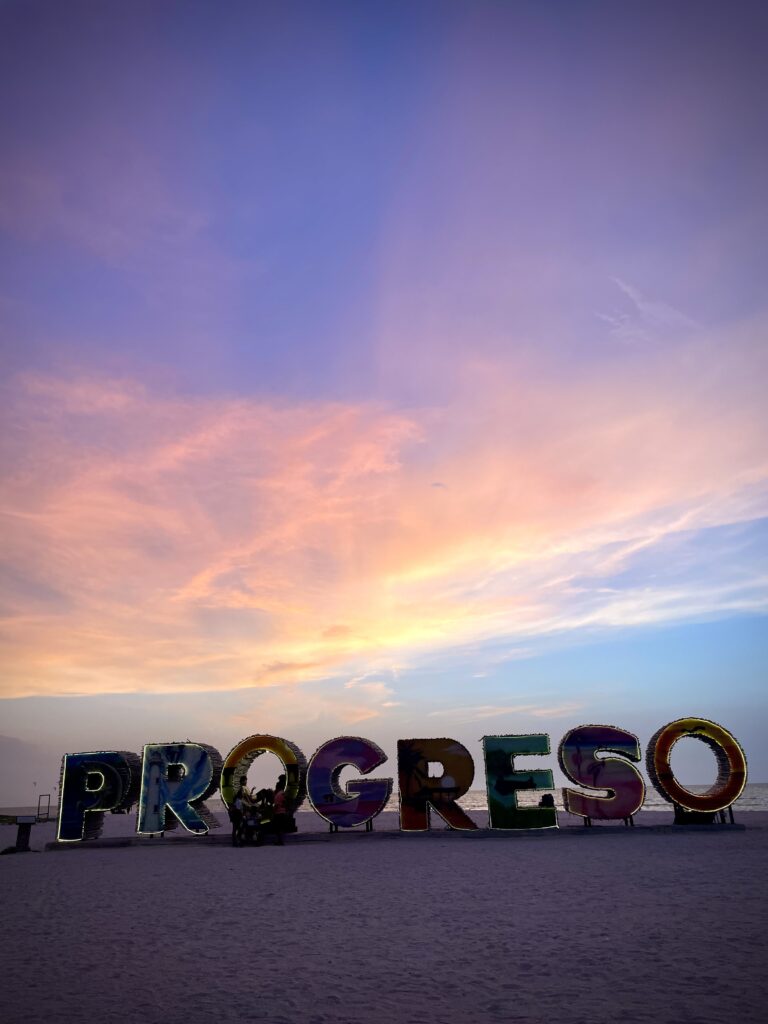
Quick Mexico Tips
- As with most places in Mexico, it’s best not to drink tap water in Mérida.
- Check before you flush… This may be a bit weird if it’s your first time to Mexico, but many places will have signs up reminding you that TP typically gets thrown in the nearby trash.
- Uber is an option! I took an Uber into downtown Mérida multiple times while Erika was at work and had no problems.
- Sometimes you can get by with a credit card, but it’s good to have pesos on hand. Many markets will only accept cash. Also know that the monetary symbol for pesos is exactly the same as the U.S. dollar, so don’t be alarmed if your dinner is listed as costing $130! The last few times I have visited the exchange rate has been 15-20 pesos to one dollar, so that $130 in pesos comes out to about $7 U.S.
- Don’t be afraid to barter and shop around when shopping. Many market prices are negotiable, and many vendors have similar variations of the same product if you are looking for souvenirs.
- In 2022, laws were extended to allow armed forces to patrol streets and perform police functions across the country. Don’t be surprised if you see military members conducting traffic stops or patrolling cities and highways during your travels.
Mérida Specific
Events: While I enjoyed all of my visits to Plaza Grande, I wish I had known before my trip that there is actually a weekly schedule of events! I would have loved to see the Pok Ta Pok game on Saturday, and realized as soon as I got home that there is an artisan festival that I missed by only a few weeks. Oops! Next time.
Art to buy: Fine metal filigree in the form of ornaments and jewelry are unique to Mérida, as is anything made out of henequen. There is a strong textile tradition in general, and woven or embroidered clothes and handwoven hammocks are very popular. If you see large, heavy-duty hooks on the walls of rooms throughout Merida, they are for hammocks. I first noticed them in Erika’s house, and then again when we visited Casa Museo Montes Molina. Traditionally hammocks offered a cool, breathable way to sleep despite the Yucatan’s intense heat, and now they are often kept in homes in case of power outages. No electric to run your AC while you sleep? Pull out the hammocks!
Climate: As you probably guessed from the hammock usage, the Yucatan is a tropical area, with more humidity and heat than many other parts of Mexico. Even Erika, who grew up near Mexico City, frequently commented on just how hot it was. Sunscreen, water, and shade are your friends!
Culture: Something I didn’t realize before my visit was just how alive and well Mayan culture is! About 30% of the people in Yucatan speak Mayan, and it is also taught in schools and universities.
Foods to try:
